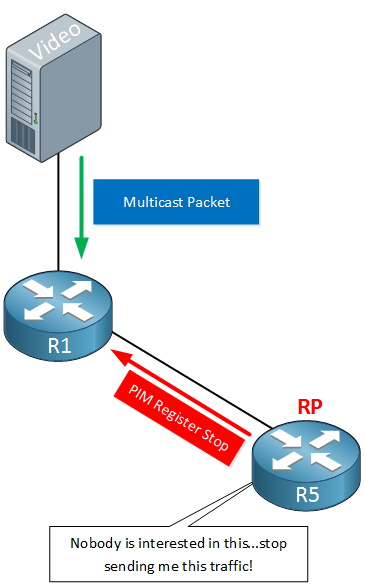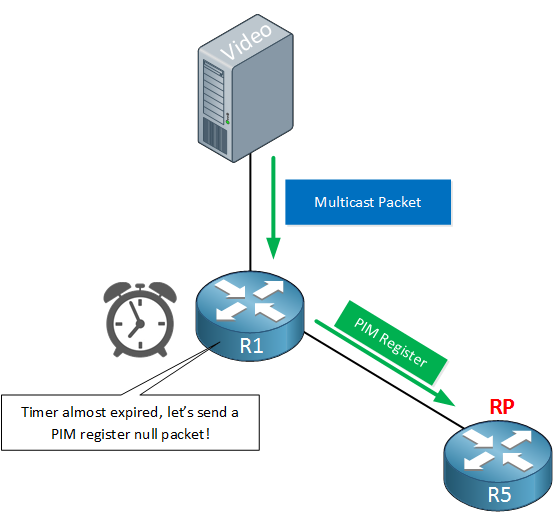Multicast - Sparse Mode register suppression timer
When implementing a Multicast network, when using PIM sparse mode, a Rendezvous Point (RP) is used to coordinate the appropriate sending of multicast traffic.
When a multicast source sends traffic to the first hop multicast router, that router will initially forward the first multicast packet to the RP. If the RP has no hosts interested in that particular multicast destination, it will send back a PIM Register Stop message to the sending router. Take a look at this diagram that illustrates this operation:

This register stop message will inform R1 to stop forwarding any multicast traffic for now. R1 stops forwarding this traffic. At this point, R1 starts a suppression timer. By default this timer is 60 seconds, and when the timer is almost expired, R1 will send another PIM register packet to the RP.

R1 will send this PIM register message but this one doesn’t carry the encapsulated multicast packet. It’s a simple request to ask the RP if it is interested now. This packet is called the PIM register null packet. When we still don’t have any receivers, the RP will send another PIM register stop message. When we do have receivers, the RP will not send a PIM register stop message and R1 will start forwarding the multicast traffic.
Links
https://networklessons.com/multicast/multicast-pim-sparse-mode